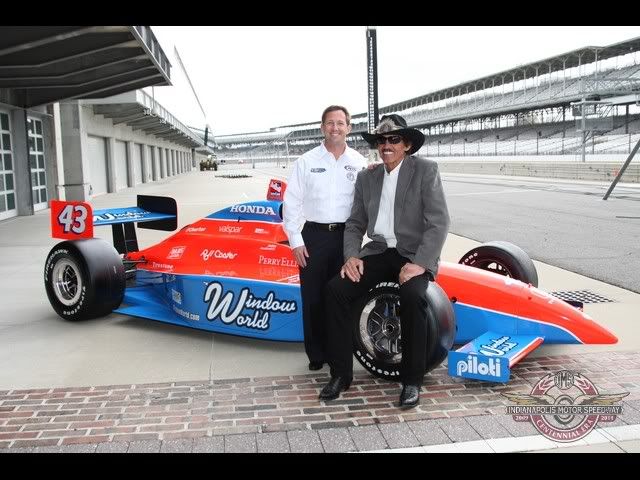
The book is Umbrella Mike: The True Story of the Chicago Gangster Behind the Indy 500 by Brock Yates. Yates cred is well established - executive editor of Car & Driver magazine, TV commentator for several Cup races back in the late 70s and 80s, and screenplay writer for Cannonball Run and Smokey & The Bandit. So the book definitely caught my attention based on the subject and its author.
While I feel like I can hold my own in talking NASCAR racing, I admit I know little about the history of the Indy 500. As a kid, I knew the drivers of that era - A.J., Mario, Gordon Johncock, Johnny Rutherford, the Unser brothers, Rick Mears, and a handful of others. Later, I knew who drivers like Danny Sullivan and Bobby Rahal were. And of course today we have Scott Dixon, Danica, Franchitti, Dan Wheldon and Tony Kanan. But I know virtually nothing about drivers pre-1960 - buys like Billy Vuckovich, Louie Meyer, Roger Ward, Wilbur Shaw, and the like.
The story was really a neat one. Yates did a nice job introducing the drivers, owners, and mechanics of the mid 30s to early 40s. And its obvious he did his research to write the book.
Without giving away all of the key details of the book, a few nuggets of info I learned that made me shake my head were:
- Unlike today's Indy or NASCAR race cars which are often built for a unique type of track, could be rendered obsolete in one season, or may be discarded after only one wreck, the Indy cars of the 30s were often run a decade or more and at different types of tracks.
- With today's advances in safety technologies, fans, media, and competitors are all shocked at those infrequent events when a driver is killed. However, from the 20s through the 40s, about one-third of drivers competing regularly in the 500 could expect to be killed - a startling, morbid, statistical reality of the early days of auto racing.
- The Indy 500 ran throughout the 1930s despite the Great Depression that strangled much of America. The costs of fielding an entry and the purse and promotional rewards for the winner were shockingly high relative to the struggles of many in the country. Only the U.S.'s involvement in World War II in late 1941 interrupted the 500 from 1942 through 1945.
- I think Yates must have self-edited his book. He repeats himself frequently. Also, each chapter starts with a theme but frequently jumps off on a tangent - sometimes dropping in details from an event decades ahead or behind because of one lead-in sentence.
- The title of the book leads the reader to believe it will be about Michael "Umbrella Mike" Boyle - head of the International Brotherhood of Electrical Workers labor union in Chicago - and his quest to win the 500. Yates introduces Boyle, talks about his Irish heritage, and notes the power he established in Chicago as a union boss. But he never really addresses the reasons for Boyle's passion for winning the 500. Nor does he answer some key questions such as how he managed to funnel his ill-gotten gains through his position to his race teams (although Yates does note that the FBI routinely investigated Boyle). In all fairness to Yates though, I'm guessing minute details about the life and happenings of a fraudulent, criminal union boss in Chicago in the same era as Al Capone aren't exactly available by the wheelbarrow load.

Despite some of the editing flaws, I do recommend the book. Its still a far better book than most books about NASCAR I've read over the last three decades.
TMC

No comments:
Post a Comment